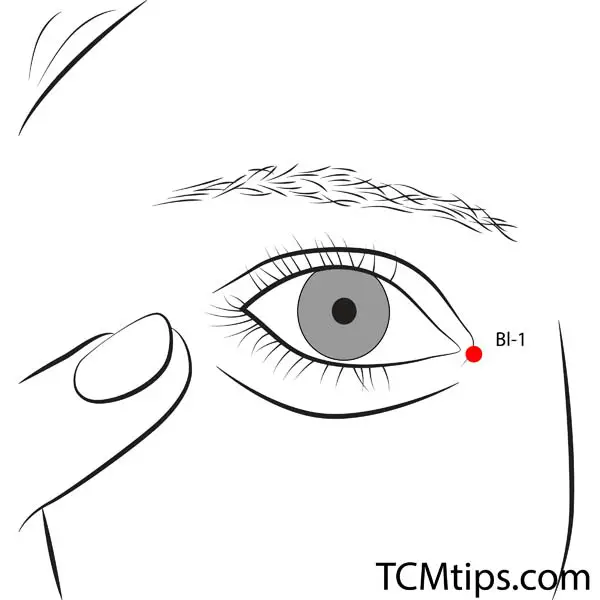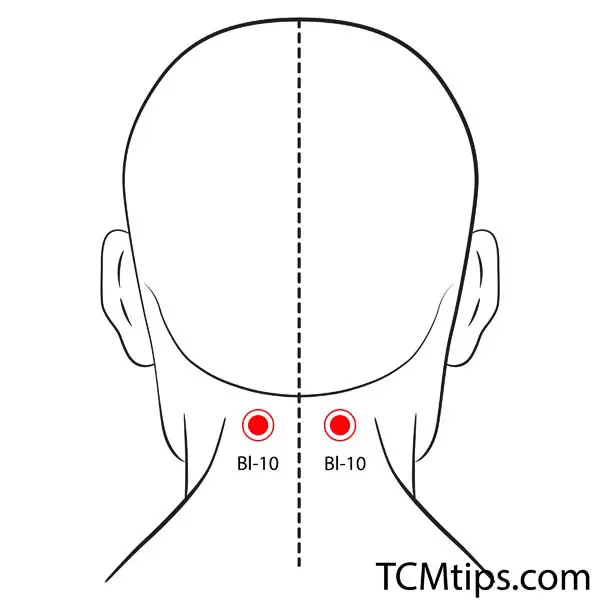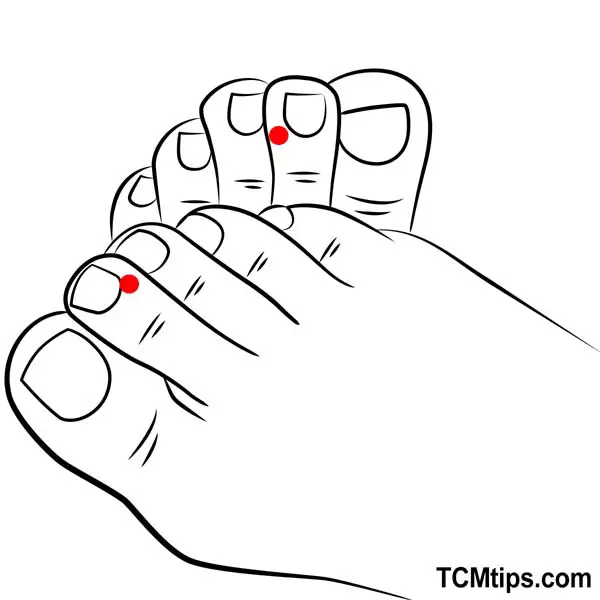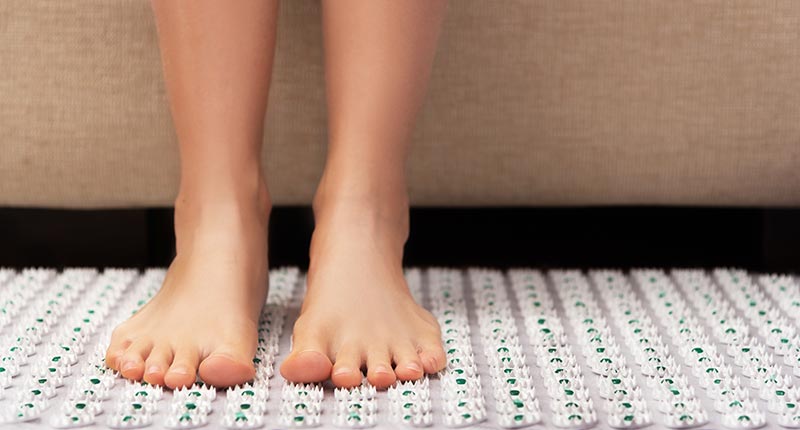Stuffy noses or nasal congestion is not a new phenomenon. It can be very uncomfortable when experienced as it makes breathing difficult.
It occurs mostly as a result of inflammation or irritation to the nasal tissues caused by either the common cold or the flu.
In traditional Chinese medicine, a stuffy nose is known as “nasal blockage” and is caused by a deficiency in the lung qi.
Deficiency in the lung qi can lead to a pathogenic cold invading the nose, causing the victim or patient to experience symptoms such as nasal obstruction, nasal congestion, and sneezing.
Acupressure for stuffy nose treatment involves fixing the lung qi deficiency by increasing the qi of the lungs, thereby enhancing its function.
What Is The Cause Of Stuffy Nose

When the nasal tissues are inflamed, they start producing lots of mucus to flush the nasal canal. The inflamed nasal canal often traps this mucus, causing the feeling of nasal congestion.
One of the major causes of nasal congestion is rhinosinusitis, also known as the common cold. It can be acute or chronic. The inflamed nasal canal caused by the infection is responsible for the stuffed-up feeling we get.
Another cause of a stuffy nose or nasal congestion can be an allergic reaction to foreign objects, such as pollen. When these foreign objects find their way into the nose, the sinuses get inflamed while trying to flush them out, leading to the feeling of a stuffy nose.
Other causes include
- Spicy dishes
- Enlarged adenoids
- Dry air
- Alcohol
- Hormonal changes
Does Acupressure Help With Stuffy Nose
In numerous studies carried out, it has been found that undergoing acupressure for stuffy nose practice helps lessen the effects of nasal congestion. This can easily be done by either a professional acupressurist or through self-administration.
In a 2006 study, a practitioner survey was carried out on the use of acupuncture for treating sinus and nasal symptoms. The study was aimed at determining the success rate of using acupuncture for the stuffy nose (nasal congestion symptoms) and chronic sinus treatment.
In the study, 1516 regional licensed acupuncturists were emailed a survey on acupuncture and chronic sinus symptoms. 22% (331) of the surveys were returned. 99% of the returned surveys reported having used acupuncture to treat patients with chronic sinus and nasal symptoms.
Using a 5-point scale, the use of acupuncture in treating chronic sinus and nasal symptoms has an efficacy score of 4.2. Therefore, the study concluded that acupuncture is widely accepted by complementary medicine practitioners for treating chronic sinus and nasal symptoms.
In a 2020 Bayesian meta-analysis study on treating allergic rhinitis, 39 studies, consisting of 3433 participants, were analyzed to see the effects of acupuncture, sham acupuncture, and moxibustion in treating allergic rhinitis.
At the end of this meta-analysis, it was concluded that acupuncture was superior to sham acupuncture in terms of total nasal symptom score. Also, combining acupuncture with conventional medicine was considered the most effective method used to relieve allergic rhinitis symptoms in 9 treatments.
And this study shows that acupuncture as a complementary treatment can be used to improve the quality of life of patients who are suffering from moderate to severe allergic rhinitis with no severe adverse effects.
So, in conclusion, acupressure practices such as acupressure for stuffy nose and acupressure for sinus inflammation can help ease the effects of a stuffy nose or nasal congestion and improve the lives of patients suffering from it.
How To Relieve A Stuffy Nose With Acupressure

You can easily carry out DIY acupressure for stuffy nose treatments at home by applying pressure to certain pressure points for congestion relief.
These pressure points are spread all over the body. We went over the various pressure points for nose congestion relief that you can use to perform acupressure for stuffy nose treatment in greater detail.
To do this, follow these steps:
- Using a mirror, locate the various acupoints on your face.
- Using your fingers or a thumb, apply firm pressure on the acupoint while rotating the finger in a clockwise manner.
- Do this for three minutes per session, and repeat this multiple times throughout the day.
This same procedure can also be used on children. All you need to do is find the appropriate pressure point to massage the baby to relieve a stuffy nose.
- Place your forefingers on both sides of the baby’s nose.
- Gently massage that point for 10 to 20 seconds.
- Repeat this step multiple times per day till your baby’s nose is completely decongested.
What Are The Acupressure Points For Stuffy Nose
In this chapter, we will be discussing six of the best acupressure points for stuffy noses.
Note that these acupoints can also serve as acupuncture points for stuffy noses. The major difference is that in acupressure, we apply pressure to these points, while in acupuncture, we use thin needles to stimulate these acupoints.
Acupoint: LI-20 (Other Names: Large Intestine-20/Ying Xiang/Welcome Fragrance)

The LI-20 is also known as Yingxiang, which translates to “welcome fragrance”. It is one of the best pressure points for stuffy noses and nasal congestion treatment.
It helps to relieve and clear nasal congestion and also epistaxis by dispelling exterior winds, clearing heat, and opening nasal passages. It is a good acupressure point for colds and also great for relieving itching on the face and treating biliary ascariasis.
The LI-20 is located on the face. It is at the midpoint of the lateral border of the ala nasi, in the nasolabial groove.
Acupoint: Bl-1 (Other Names: Urinary Bladder-1/Jing Ming/Bright Eyes)

The BL-1 is also known as jingming, which translates to bright eyes. It is located in the depression around the corner of the eye where both the lower and upper eyelids meet.
The BL-1 is the crossing point where the small intestine, stomach meridian, the urinary bladder, and the Yin Qiao and Yang Qiao vessels all meet.
Stimulating this acupoint helps dispel heat and wind, thereby helping to clear up the nasal passage. They are also great for treating blurry vision, myopia, and other eye-related issues.
The BL-1 is also used to carry out acupuncture for swollen turbinates treatment.
Acupoint: Bl-10 (Other Names: Urinary Bladder-10/Tian Zhu/Celestial Pillar)


The BL-10 is also known as Tianzhu, which translates to celestial pillar. It is located in the depression along the back of the neck, within the posterior hairline, around 1.3 cun lateral to the midline.
When this acupoint is properly stimulated, it can help relieve sore throats, nasal congestion, dizziness, and headaches.
This acupoint provides a lot of benefits to the head. It helps expel wind and heat, activates the meridian, opens the sensory orifice, and alleviates pain. It is also used in acupuncture for hair thinning.
Acupoint: ST-45 (Other Names: Stomach-45/Li Dui/Running Point)

The ST-45 is also known as Lidui in Chinese, which translates to Sick Mouth in English. It is located on the index toe of the foot, 0.1 cun from the corner of the nail.
This acupuncture point helps to calm the mind. It can also aid in clearing heat from the stomach meridian and can also be used to revive consciousness.
The ST-45 connects the nose to the tip of the toes, making them great sinus pressure points. Stimulating them can help cure sore throats, toothaches, epistaxis, and nasal congestion. It is also used in acupressure for sinus infections.
Acupoint: LI-4 (Other Names: Large Intestine-4/He Gu/Joining Valley)

The LI-4 is also known as the joining valley and is located at the dorsum of the hand, sitting between the first and second metacarpal bones on the radial side.
The LI-4, when stimulated, can help improve the body’s natural immunity against some types of infections. This is a great acupuncture point for fever treatment, muscle aches and pains, running nose, nasal congestion, and sore throats.
Some of its other functions include tonifying qi, inducing labor, expelling winds, and regulating the face and head areas.
Acupoint: ST-36 (Other Names: Stomach-36/Zu San Li/Leg Three Miles)

The stomach-36 is located 3 cun below ST-35, one finger’s breadth from the anterior crest of the tibia.
This is an important acupoint used to treat stomach problems. It is part of the stomach meridian and helps to promote the circulation of qi and blood along it. The stomach meridian goes all the way to the nose tips, so stimulating this pressure point can help cure coughs and asthma, nasal congestion, and other sinus infections.
The ST-36 helps to activate the meridian, dispel heat, tonify qi, and promote general wellness of the body. It is also good for acupuncture for knee inflammation.
Conclusion
In summary, stimulating these various acupressure points helps relieve sinusitis symptoms and clears the nasal canal, allowing you to breathe better.
- LI-20 helps to relieve and clear nasal congestion by dispelling exterior winds, clearing heat, and opening nasal passages.
- BL-1 is the crossing point where the small intestine, stomach meridian, the urinary bladder, and the Yin Qiao and Yang Qiao vessels all meet.
- BI-10 helps to expel wind and heat, activates the meridian, opens the sensing orifice, and alleviates pain.
- ST-45 helps in calming the mind. It aids in clearing heat from the stomach meridian and can also be used to revive consciousness.
- LI-4, when stimulated, can help improve the body’s natural immunity against some types of infections, such as sinusitis.
- ST-36 helps to activate the stomach meridian, dispel heat, tonify qi, and promote general wellness of the body.
 P. Sze
P. Sze 
















